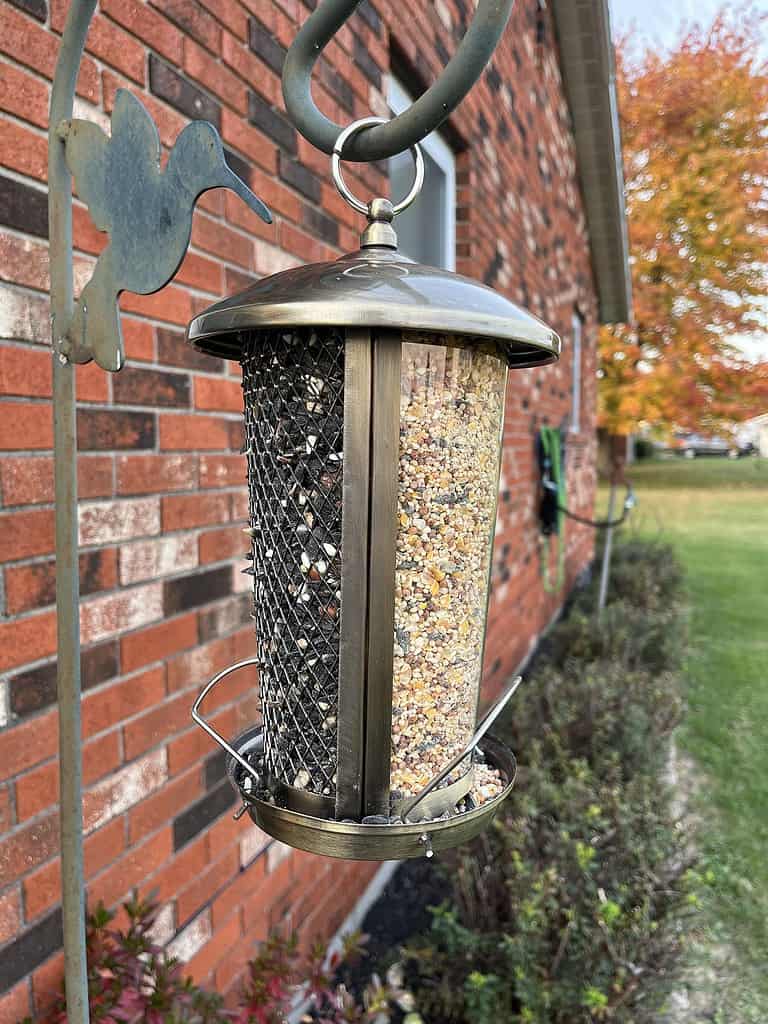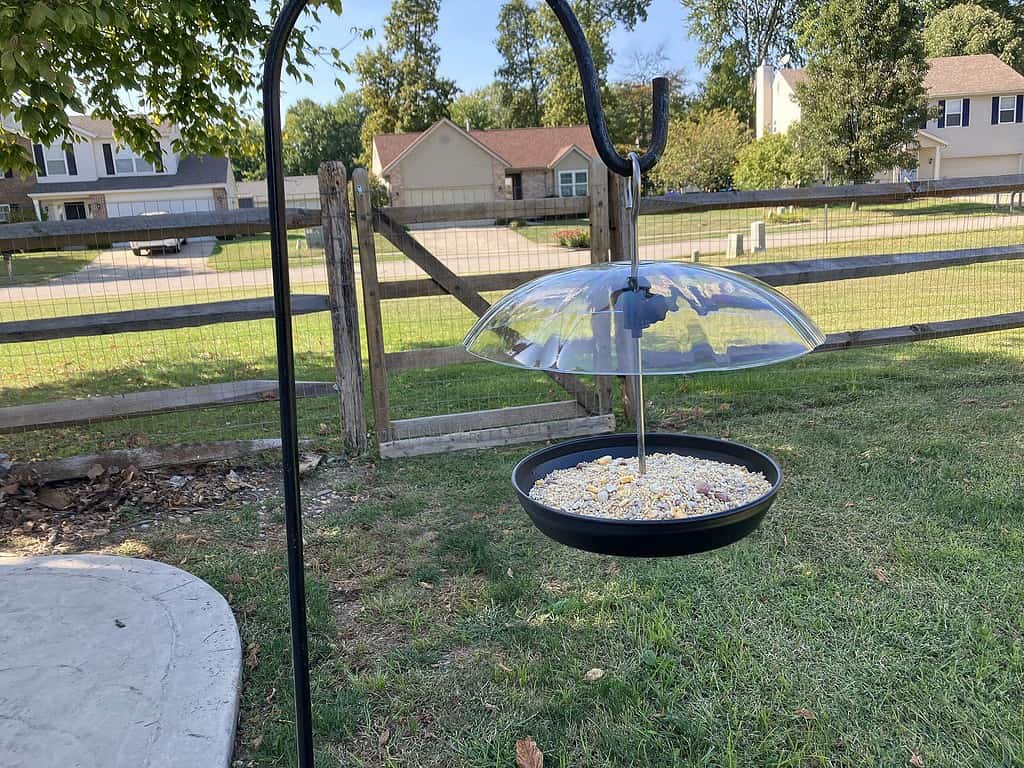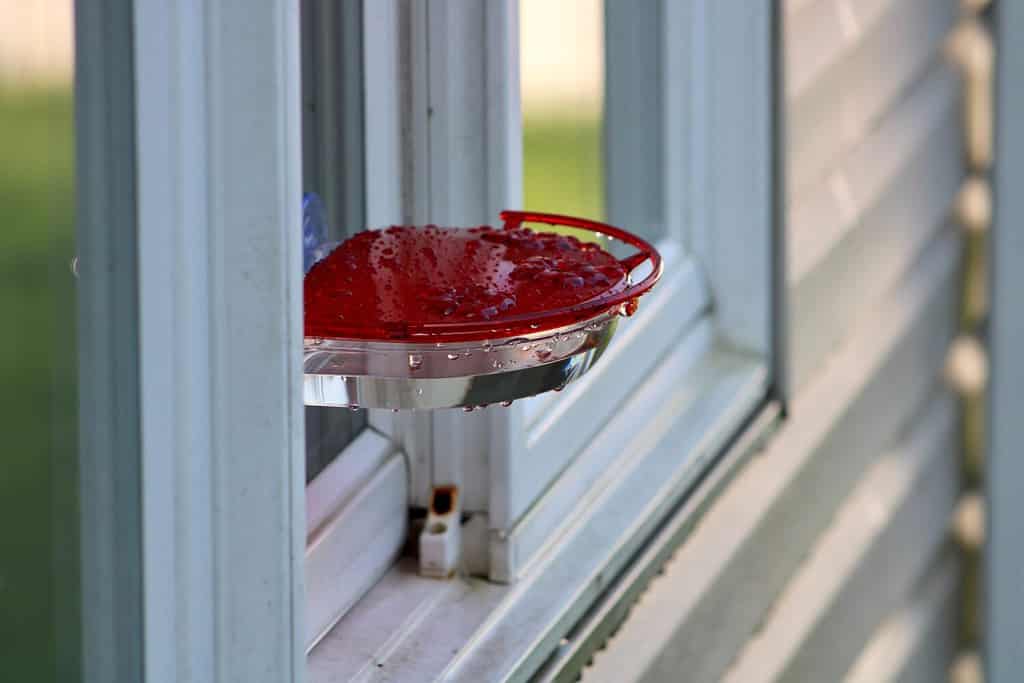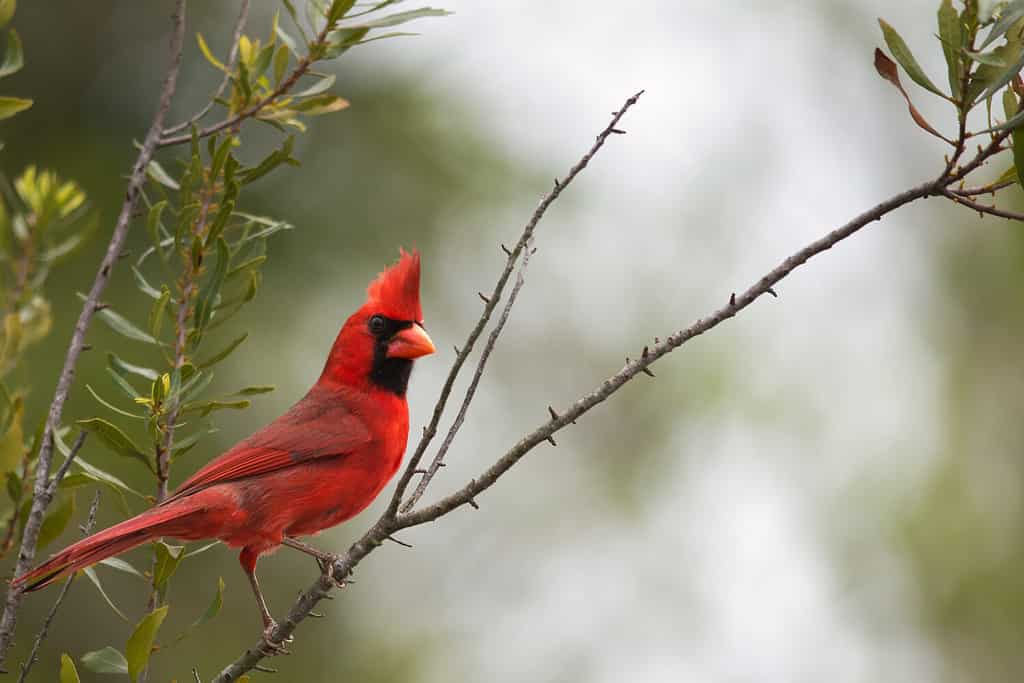Cardinals are not only one of the most beloved kinds of birds for enthusiasts, but they’re also one of the most easily recognized! The bright red feathers of a Northern Cardinal, for instance, can be spotted from quite a distance. It makes sense that many bird watchers and families alike would enjoy having these beautiful birds flying around their property. But, how can you actually attract them to your yard? One of the easiest ways is by choosing bird feeders that Cardinals can enjoy.
Though they might have some predictable behavioral patterns, that doesn’t mean that Cardinals can’t be a bit selective when it comes to their feeders. They need something sturdy, with ample room to perch. If something sways or is too small, that can be enough for them to go hunting for something more. In this article, we’ll be detailing five of the best choices for Cardinal bird feeders. This way, they’ll be flocking to your yard in no time at all!
#1: Hopper Feeders

Hopper bird feeders are an excellent choice for those who hate constant refilling.
©Mcedm / CC BY 4.0 – License
Our first choice for suitable types of Cardinal bird feeders is hopper feeders. These are feeders that are quite popular, especially for birds like the Cardinal. They have a house-shaped design with a roof and platform base. The feed is stored in the center area, a hopper that automatically replenishes the food as the birds eat it.
Pros:
- These feeders have a large platform, which is important for Cardinals. They’re larger birds and a bit less agile than some others, which means they prefer areas where they can comfortably perch.
- Hoppers hold a large amount of bird food, which means that users don’t need to refill the feeder as frequently. This is especially important if you have a backyard with lots of bird traffic!
- The roof on the hopper feeder is great for providing shelter (to both the birds and the food) during inclement weather.
Cons:
- The biggest con with hopper feeders is that this combination of large storage capacity and easy accessibility can make it a welcoming invitation for squirrels and other undesired backyard critters.
- Another thing to consider is placement. These need to be near foliage in order to attract cardinals, but not so close to it that predators can access it easily.
#2: Tube Feeders

Tube feeders are excellent for feeding multiple birds all at once!
©Pbtflakes, CC BY-SA 4.0 – License
Our next kind of bird feeder for Cardinals are tube feeder. These have a unique cylindrical structure, meant to house several feeding perches at once. The feed is contained in the tube and is dispensed as needed through the many holes. These can be hung just about anywhere, whether it be from trees or poles.
Pros:
- Tube feeders are great for dispensing smaller seeds like sunflower seeds, which happen to be a fan-favorite among Cardinals.
- Multiple perches can be excellent for attracting many types of birds at once, and the smaller platforms help discourage other creatures from eating the feed.
Cons:
- Due to the structure of tube feeders, larger birds (like Cardinals) can feel a bit strained and restricted. These birds can have a hard time perching on the small areas.
- Cardinals tend to prefer platforms that are more stable and open, and the small ports on a tube feeder can feel too constricting for them to conduct their normal feeding behavior.
#3: Platform Feeders

Cardinals highly enjoy the open design that platform feeders have.
©Mcedm / CC BY-SA 4.0 – License
Our next kind of feeder is the platform feeder, which is also sometimes called a tray feeder. This is a simple design, but a great one nonetheless. There is a flat, open tray/platform that is hung or mounted. Simple as that!
Pros:
- Cardinals adore the spacious design that platform feeders have. It also accommodates the fact that they enjoy having a stable platform.
- Because of how open the design is, you can put pretty much any kind of feed into it. Whether that be seeds, nuts, or even chunks of fruit!
Cons:
- Platform feeders need a lot more maintenance than others because of the exposed food. Mold and spoilage can be quite common.
- If you’re just looking for a certain kind of bird, be warned that these feeders can attract a lot of unwanted creatures (like squirrels and rats). This is especially true when placed on the ground!
#4: Suet Feeders

Suet feeders can be especially useful during the winter months!
©Steve Byland/Shutterstock.com
The next kind of bird feeder we’ll discuss is suet feeders. Suet is a type of bird food cake made from a combination of seeds, grains, and animal fat. These feeders are usually made of a wire mesh cage that holds the cake sturdily, allowing birds to peck at it from afar.
Pros:
- Suet is rich in calories and fat, things that are difficult for birds to come by in the winter months. This high-energy content is crucial for birds to stay healthy in the cold weather!
- Cardinals can be attracted to these in the cold months because other food sources, like insects, become quite scarce quickly. This is especially true for this bird family, because they don’t migrate!
Cons:
- Suet feeders are pretty much only useful in the cold. During the summer, they frequently melt.
- Much like some of the other feeders on this list, the suet can easily attract animals that are not birds. It’s important to consider where you place these feeders, or else a squirrel, raccoon, or rodent will beat them to it.
#5: Window Feeders

Window feeders are great for getting close-up looks at birds!
©Jaclyn Vernace/Shutterstock.com
The last kind of Cardinal bird feeder on our list is window feeders. These feeders are well-known for their close-up action, as they attach right to a window using suction cups. If you want to see birds from a close distance, this is your best bet!
Pros:
- Obviously, the biggest pro to these feeders is the appeal of seeing birds up close.
- Window feeders are great options for those who have limited outdoor space since they attach straight to your window.
Cons:
- Window feeders are small in size, which means they need to be cleaned and refilled more often than other types of feeders.
- Birds can’t always see that the feeder is attached to glass! Using a window feeder comes with the caution that you may experience more window collisions than normal. Try to take preventative measures to keep the birds safe.
More Tips For Attracting Cardinals

Picking the right kind of bird feeder isn’t the only effective way to attract cardinals!
©David Spates/Shutterstock.com
Now you know the many types of attractive bird feeders for cardinals, but there is even more knowledge to unlock if you want to do your best at bringing these red beauties into your yard. Before we leave you, here are some final, helpful tips for attracting cardinals:
- Cardinals look for nesting areas that are high above the ground (around ten feet) and surrounded by dense foliage.
- Though the cardinal is not a notoriously picky eater, there are certain foods that attract them more than others. You can try adding vegetation like dogwood and sumac in order to do a better job at welcoming them!
- A fun fact about cardinals is that when they choose a home, they stay there throughout all the seasons! This means that you should make their habitat as winter-friendly as you can, keeping those bird feeders stocked and ensuring that their water sources don’t freeze over.
The photo featured at the top of this post is © Thomas Torget/Shutterstock.com
Thank you for reading! Have some feedback for us? Contact the AZ Animals editorial team.







